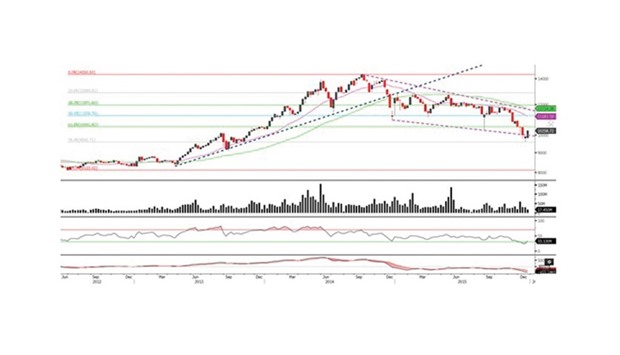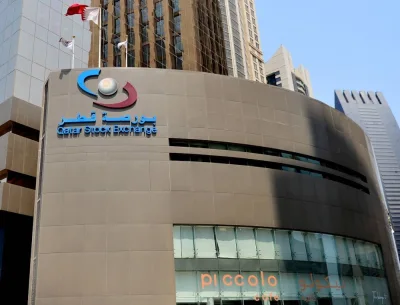The QSE index closed at 10,258.72 points and gained 3.49% versus the week before. The index concluded the week higher but it is lacking the desired higher traded volumes. It could be in a bounce mode that could continue while the main trend remains down. We reiterate our weekly support and resistance levels around 9,600 and 11,300 points, respectively.
Definitions of key terms used in technical analysis
The Qatar Stock Exchange (QSE) index gained 345.8 points, or 3.49%, during the week to close at 10,258.72. Market capitalisation increased by 3.14% to QR528.1bn versus QR525.1bn at the end of the previous week. Of the 43 listed companies, 33 companies ended the week higher, while four fell and six remained unchanged. Islamic Holding Group (IHGS) was the best performing stock for the week with a gain of 22.9% on 321,121 shares traded. On the other hand, Ahli Bank (ABQK) was the worst performing with a decline of 3.3% on only 13,305 shares traded.
Ezdan Holding Group (ERES), Masraf Al Rayan (MARK) and QNB Group (QNBK) were the primary contributors to the weekly index gain. ERES was the biggest contributor, adding 96.7 points to the index. MARK was the second biggest contributor, tallying 55.7 points to the index. QNBK pushed the index higher by 47.7 points. On the other hand, Milaha (QNNS) shed 5.8 points from the index.
Trading value during the week decreased by 25.9% to reach QR0.956bn versus QR1.3bn in the prior week. The banks and financial services sector led the trading value during the week, accounting for 35.9% of the total trading value. The industrials sector was the second biggest contributor to the overall trading value, accounting for 29.2% of the total trading value. Gulf International Services (GISS) was the top value traded stock during the week with total traded value of QR175.8mn.
Trading volume decreased by 11.4% to reach 27.9mn shares versus 31.5mn shares in the prior week. The number of transactions fell by 17.5% to reach 15,555 versus 18,850 in the prior week. The banks and financial services sector led the trading volume, accounting for 24.4%, followed by the real estate sector, which accounted for 19.9% of the overall trading volume. Vodafone Qatar (VFQS) was the top volume traded stock during the week with total traded volume of 4.2mn shares.
Foreign institutions remained bearish during the week with net selling of QR7.2mn versus net selling of QR75.0mn in the prior week. Qatari institutions remained bullish with net buying of QR5.3mn versus net buying of QR123.1mn the week before. Foreign retail investors turned bullish for the week with net buying of QR31.3mn versus net selling of QR9.8mn in the prior week. Qatari retail investors remained bearish with net selling of QR29.7mn versus net selling of QR38.4mn the week before.
In 2015 year-to-date, foreign institutions bought (on a net basis) $456mn worth of Qatari equities.
The QSE index closed at 10,258.72 points and gained 3.49% versus the week before. The index concluded the week higher but it is lacking the desired higher traded volumes. It could be in a bounce mode that could continue while the main trend remains down. We reiterate our weekly support and resistance levels around 9,600 and 11,300 points, respectively.
Candlestick chart – A candlestick chart is a price chart that displays the high, low, open, and close for a security. The ‘body’ of the chart is portion between the open and close price, while the high and low intraday movements form the ‘shadow’. The candlestick may represent any time frame. We use a one-day candlestick chart (every candlestick represents one trading day) in our analysis.
Doji candlestick pattern – A Doji candlestick is formed when a security’s open and close are practically equal. The pattern indicates indecisiveness, and based on preceding price actions and future confirmation, may indicate a bullish or bearish trend reversal.

The QSE index closed at 10,258.72 points and gained 3.49% versus the week before.


